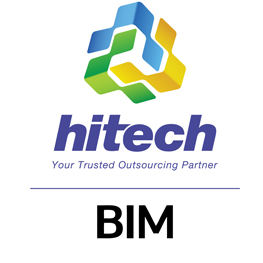CAD Vs BIM for building construction & infrastructure projects
2D CAD design, the conventional construction methods or BIM; architects, contractors and EPC firms have been debating about in the entire last decade. However, the outlook for adopting BIM is changing dramatically. Conservative construction professionals have started favoring BIM due to coordination, collaboration and various other evident benefits that BIM offers with help of architectural CAD services.
Entire AEC (Architecture, Engineering & Construction) industry has witnessed the layers of BIM benefits getting unveiled; making it one of the most desirable methodologies to increase profits. To know the difference between the traditional approach Vs BIM approach or so called conventional 2D designs and BIM designs; we should understand:
· What is BIM in Construction Industry?
· What is the BIM process?
· What are BIM levels?
· Why architects & contractors were hesitant initially, but now are willing to adopt BIM?
BIM is an intelligent 3D model based process that provides insight and tools to AEC professionals, helping them to efficiently design buildings and infrastructure. The BIM process is an assortment of creating, evaluating and monitoring the digital representations of the physical and functional aspects of the building design. To attain this BIM files with huge amount of data are generated to view, change and communicate details to all those involved across the construction project. Most importantly BIM is not only about 3D models, as it can be used for a variety of tasks across construction phases including:
· 3D BIM – Visualization
· 4D BIM – Construction Scheduling & Simulation
· 5D BIM – Cost Estimating & Quantity takeoffs
· 6D BIM – As-built Operation
· 7D BIM – Facility management
80% of contractors report difficulty finding qualified craft workers to hire, and this makes BIM approach more favored…Autodesk
All these put together make it makes the overall construction and maintenance process really convenient and insightful while designing and managing residential, commercial, multipurpose buildings; and infrastructure projects like dams, roads, bridges, tunnels, etc. So how does BIM approach compare with traditional approach? Here are some of the key areas where BIM approach scores over conventional construction methods:
Building Design Information Sharing & Communication
Traditional approach or the so called 2D CAD design approach; compels different participants to wait for another’s design completion. This leads to a lot of data deliverables stacked up in silos before they are exchanged amongst design teams to be used effectively. More than often such datasets go obsolete and are wasted. However; utilizing Autodesk Revit for BIM facilitates exchange of information amongst stakeholders through sharing and integration of building information models of the teams at any given point in time.
Now the architects, general contractors, surveyors and all other involved in the construction process can thoroughly explore and change the designs as and when required – as the changes automatically get updated for other stakeholders without additional efforts. With real time design adjustments and development, the continuous information flow instead of interrupted batch flow keep the data always up-to-date and the clear design visualization enhances the communication.
Unnecessary delays & Idle Time
BIM based design phases clearly indicate the reduced delays as against the traditional designing approach. One of the most appreciated features of BIM is that it allows significant degree of flexibility across the building design process. The data sharing can be initiated even before the design is completed, resulting in less or minimum idle time for various teams awaiting complete data information from other teams. This results in considerable reduction of time consumed in coordination and manual checking, while allowing other tasks to be completed at speed. Taking the BIM approach eliminates the issue of idle time and unwarranted delays.
2D CAD drawing/design is for Architects, but BIM is for owners
Construction drawings are meant to be understood by architects, contractors, surveyors and AEC professionals alike, but for owners they are a lot of lines running from here to there in the drawings. BIM which was introduced primarily as a design tool has now attained the position of a must-have element for leading contractors and now is becoming the first choice of owners around the world. Owners look at the numerous benefits of BIM not only on their projects, but also want to leverage BIM features in facility operating environments. BIM empowers owners through:
· Better understand of building design projects right from inception
· Improve building quality
· Optimize operational efficiencies
· Significantly reduce building lifecycle costs
· Increase occupancy
Traditional 2D CAD services & 3D BIM services; both are mandatory and effective
But the advantages of BIM approach are too many to be ignored. Major advantages of BIM approach, as compared to traditional construction methodology, apart from increased control over the construction project is the relief from tedious work of information production and repetition processes. It also automates construction project management. All these come up as building construction projects of higher quality and lesser deviations and problems across the construction process. With conveniently available outsource BIM services in India to Hi-Tech BIM, procuring 3D BIM design and consultancy proves to be reliable and profitable.
Source: https://hitechbim.wordpress.com/












